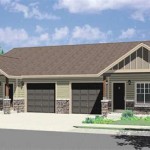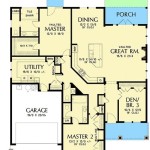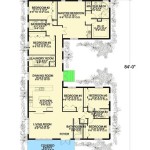Drawing Up The Perfect House Plans: Leveraging Free Resources and Strategies
Creating the perfect house plans is a multifaceted undertaking, demanding careful consideration of personal needs, lifestyle, budget constraints, and local building codes. While engaging a professional architect or designer offers a personalized and comprehensive solution, numerous resources enable individuals to begin the planning process independently, leveraging free tools and strategies to develop preliminary designs. This allows homeowners to gain a deep understanding of their spatial requirements and preferences before committing to potentially costly professional services.
The initial stages of house planning involve translating abstract desires into concrete specifications. This necessitates a rigorous evaluation of current living arrangements, identifying elements that are satisfactory and those that require improvement. Consider the flow of movement between rooms, the functionality of existing spaces, and the overall aesthetic appeal. Documenting these observations provides a solid foundation for defining the scope of the new house plans.
Furthermore, understanding the specific requirements of the building site is crucial. Factors such as the size and shape of the lot, its orientation to the sun, prevailing winds, and any existing topography will significantly impact the design. Local zoning regulations and building codes must also be thoroughly researched and adhered to. Ignoring these regulations can lead to costly delays and revisions later in the construction process.
Understanding Your Needs and Lifestyle
Defining the needs and lifestyle of the occupants is paramount. The number of bedrooms and bathrooms, the size and configuration of the kitchen, and the requirement for dedicated spaces like a home office or a recreation room should be carefully considered. Family size, work habits, hobbies, and entertaining preferences all play a crucial role in shaping the design. For example, a family with young children might prioritize a large, open-plan living area with direct access to a backyard, whereas a professional working from home might require a dedicated and soundproofed office space.
Beyond the practical needs, aesthetic preferences should also be factored into the design. This involves considering the desired architectural style, the types of materials to be used, and the overall ambiance of the home. Exploring different architectural styles, from modern to traditional, can help identify preferences and inspire design ideas. Online resources, magazines, and architectural books offer a wealth of visual inspiration. Careful attention to detail, such as window placement, natural light, and interior finishes, can significantly enhance the living experience.
Accessibility considerations are also important, particularly for individuals with mobility limitations or for aging in place. Incorporating features such as wider doorways, grab bars in bathrooms, and ramps instead of stairs can ensure that the home remains accessible and comfortable in the long term. Universal design principles advocate for creating spaces that are usable by people of all abilities, promoting inclusivity and adaptability.
Utilizing Free Online Resources and Software
A plethora of free online resources and software tools are available to assist in creating house plans. These resources range from simple floor plan sketching tools to more sophisticated 3D modeling programs. Many websites offer collections of pre-designed house plans that can be downloaded and adapted to suit individual needs. These plans can serve as a starting point for generating ideas and exploring different design options. Caution must be exercised when using pre-designed plans to ensure they comply with local building codes and zoning regulations.
Free online floor plan creators offer a user-friendly way to sketch out basic room layouts. These tools typically provide a drag-and-drop interface that allows users to easily create walls, doors, windows, and furniture. While these tools may not offer the same level of detail and precision as professional software, they are ideal for visualizing spatial relationships and experimenting with different configurations. Some popular free online floor plan tools include Planner 5D, Floorplanner, and RoomSketcher.
More advanced free software options, such as SketchUp Free, allow for 3D modeling and visualization. These programs enable users to create detailed models of their proposed homes, including exterior elevations and interior finishes. SketchUp, in particular, has a large online community and a vast library of pre-built components that can be incorporated into designs. Learning to use these tools effectively requires some initial investment of time and effort, but the ability to visualize the design in 3D can be invaluable in identifying potential problems and refining the overall aesthetic.
When utilizing free resources, it is crucial to acknowledge their limitations. These tools may not provide the same level of accuracy and detail as professional software, and they may not be suitable for generating construction-ready drawings. However, they can be a valuable tool for exploring design ideas and communicating concepts to contractors or architects.
Incorporating Sustainability and Energy Efficiency
Integrating sustainable design principles and energy-efficient features is increasingly important in modern house planning. This not only reduces the environmental impact of the home but also lowers energy costs and improves indoor air quality. Simple strategies, such as maximizing natural light, using energy-efficient appliances, and installing low-flow plumbing fixtures, can significantly reduce resource consumption.
Passive solar design, which involves orienting the house to take advantage of solar energy for heating and cooling, is a highly effective strategy for reducing energy consumption. In climates with cold winters, orienting the house to the south allows sunlight to penetrate the interior, providing passive heating. In hot climates, shading windows and using light-colored roofing materials can help reduce heat gain and keep the house cooler.
Proper insulation is crucial for maintaining a comfortable indoor temperature and reducing energy loss. Insulating walls, floors, and ceilings to the recommended R-values can significantly reduce heating and cooling costs. Sealing air leaks around windows, doors, and other openings is also essential for preventing drafts and reducing energy waste.
Furthermore, consider the materials used in construction. Opting for sustainable and locally sourced materials reduces the environmental impact of transportation and supports local economies. Recycled and reclaimed materials can add character to the home while reducing waste. Choosing low-VOC (volatile organic compound) paints, adhesives, and sealants improves indoor air quality and reduces health risks.
Implementing water conservation strategies is also essential. Installing low-flow toilets, showerheads, and faucets significantly reduces water consumption. Collecting rainwater for irrigation or toilet flushing can further reduce reliance on municipal water supplies. Xeriscaping, which involves using drought-tolerant plants, minimizes the need for irrigation.
While free resources can inform sustainable design choices, consulting with an energy efficiency expert or green building professional can provide tailored recommendations and ensure that the design meets specific performance goals. Many utility companies offer rebates and incentives for implementing energy-efficient measures, further reducing the cost of sustainable construction.
By carefully considering these key points – understanding your needs and lifestyle, utilizing free online resources and software, and incorporating sustainability and energy efficiency – individuals can effectively draw up the perfect house plans and create a living space that is both functional and aesthetically pleasing.

Free Floor Plan Creator Design 2d 3d Layouts Easily

Floor Plans Learn How To Design And Plan

Create And Visualize House Plans In Minutes Roomsketcher

Free Floor Plan Creator Design 2d 3d Layouts Easily

Create And Visualize House Plans In Minutes Roomsketcher

Free Floor Plan Creator Design 2d 3d Layouts Easily

Create And Visualize House Plans In Minutes Roomsketcher

Create And Visualize House Plans In Minutes Roomsketcher

How To Make A House Plan Edrawmax

Create And Visualize House Plans In Minutes Roomsketcher
Related Posts








